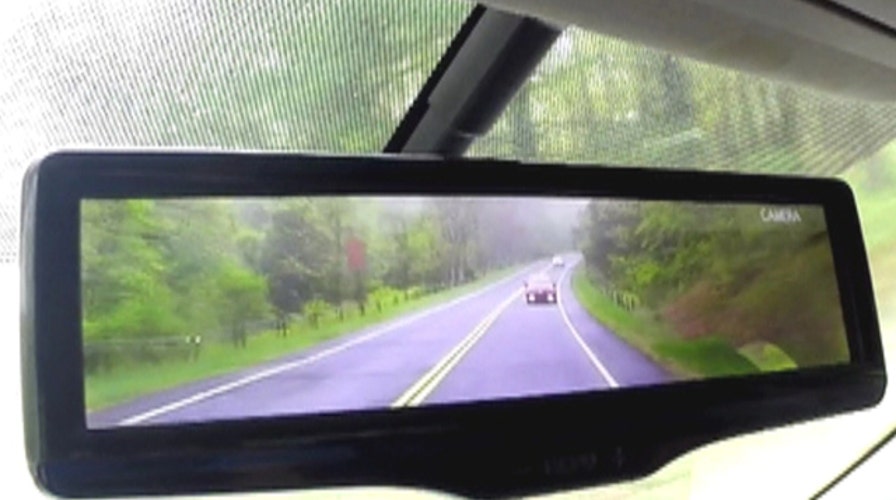Nissan's Magic Mirror
Fox Car Report checks out Nissan's Smart Rear View Mirror, which can make back seat passengers disappear.
The side mirrors used on cars today come in a variety of shapes and sizes, but they're all essentially the same, thanks to the regulations that require them on every vehicle and dictate exactly how they should work.
But now that the federal government has mandated that all new cars have video backup displays installed by 2018, automakers have asked it to let them replace the bulky outside mirrors with tiny cameras, too, in order to make their cars more aerodynamic and improve fuel efficiency.
While they wait for a decision, Nissan has developed a new rear view mirror that makes passengers and other objects inside your car disappear, giving you a perfect view of what you otherwise might not see behind you.
Nissan calls it the Smart Rear View Mirror, and it's not magic. It’s just clever design from the company that pioneered the Around View Monitor, which uses four cameras installed around a car to offer a virtual bird’s-eye view for parking and navigating tight spaces.
In the Smart Rear View Mirror, a small camera mounted behind the rear window, positioned where the wiper can keep it clean, sends a feed to a video monitor embedded in the mirror housing. You toggle a switch between the mirror and the camera display much as you change a conventional mirror from day to night settings.
It provides a field of vision that matches up almost precisely to the mirrored surface, but the picture can be adjusted for height, zoom and brightness. Nissan says it’s designed to be used on the move, not just while parking. It also offers an enhanced view in bad weather. It worked well and took only a few moments to get accustomed to on the rainy day I tried it out in one of the company’s Rogue crossovers.
The video image highlights how much the thick roof pillars and large headrests required to meet safety standards restrict your regular view, even before you add passengers and cargo to the mix. Cars behind you that otherwise might be hidden were easy to spot.
Nissan is planning to roll the Smart Rear View Mirror out in Japan next year and is currently evaluating demand in the U.S., where it believes it will soon be able to introduce it under current regulations and give drivers a better view backward into the future of motoring.
